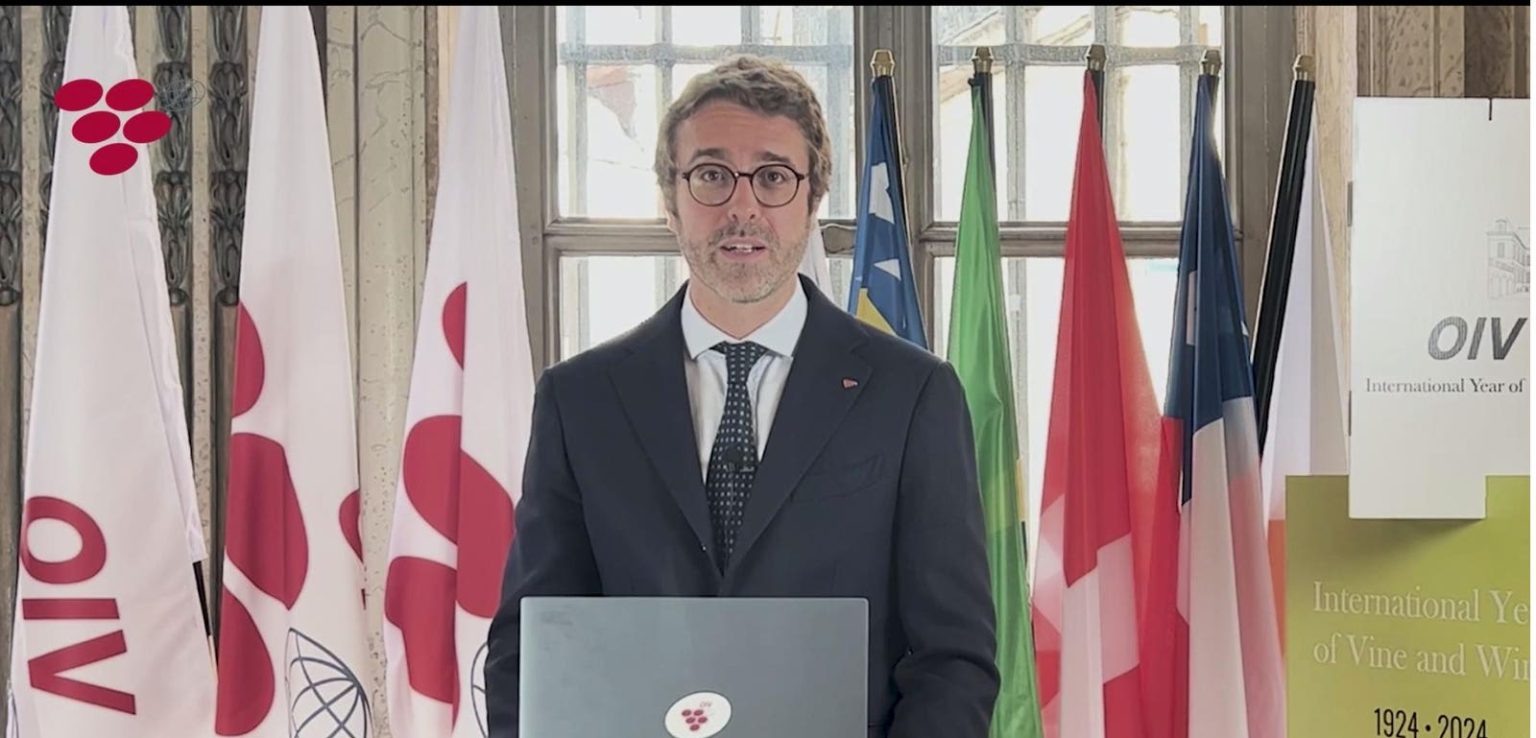In a strange twist of climatic events, France was thrust into the position of the world’s largest wine producer in 2023, according to this week’s OIV World Wide Wine Production report. France replaces Italy, who has held the top production spot for the past 9 years.
But France’s rise to the top spot wasn’t due to planting more vineyards, but because so many other large wine producing countries were afflicted by extreme weather patterns that decimated their grape crops.
“Once again extreme climatic conditions like early frost, heavy rainfall, and drought have significantly impacted the output of the world vineyard. Meteorological anomalies are becoming the new normality,” explained Giorgio Delgrosso, Head of Statistics & Digital Transformation Department with the OIV, in a webinar.
Each year the OIV collects data on the vineyard and global wine production, focusing on the 29 countries which produce 94% of the world’s wine. Despite France’s bountiful 2023 harvest (preliminary estimates of 45.8 mhl), in prior years it was also the victim of extreme heat and frost, causing loss of wine grapes, especially in 2021.
Examples of countries that were on the losing side this year were Spain, which fell 14% in production, primarily due to drought conditions, and Italy, with a 12% decrease due to heavy rains resulting in mildew that destroys grapes.
Many South American countries saw record decreases in crop sizes due to drought and wildfires, with Argentina down 23%, Chile down 20%, Brazil down 30% and Uruguay down a whopping 34%. This trend continued in Australia where a reduction of 24% was recorded, with South Africa documenting a 10% decrease in wine grape production.
Because of the extreme weather conditions, Delgrosso reported that, “In 2023, world wine production is expected to be the smallest in the last 60 years.”
The few other countries that had average grape crop sizes this year were the U.S., New Zealand, Romania, Portugal and Bulgaria, though both the U.S. and New Zealand were down in 2022 due to a combination of droughts, heavy rains and frost.
For anyone who doesn’t believe climate change is real, just spend some time in a vineyard. Wine grapes are one of the most sensitive of agriculture crops, and the extreme weather variations, and rising temperatures and green-house gases documented by NASA, NOA and other agencies, are having a negative effect on production.
A Blessing in Disguise?
However, perhaps the lower wine grape production levels in 2023 aren’t all doom and gloom, because global wine sales have been falling in the last several years. This is especially the case in Europe, where younger consumers are not adopting wine as much as their elders. A recent report by Barron showed that wine consumption fell by 34% in Portugal, 22% in Germany and 10% in Spain in the last year alone.
And though the numbers are not as dour in the U.S., wine volume sales have fallen by 4.5% and value sales are down 1% in the past 52 weeks since July 2023, according to a NielsenIQ presentation at a Wine Market Council webinar.
In a strange way, perhaps Mother Nature is trying to help global wine production to come into balance. This is because when there is over-production, EU countries often pay farmers to pull out the grape vines and/or convert the crops to alcohol, which can be used for hand sanitizer and other products. In fact in France earlier this year, the government announced they are paying farmers $215 million to convert the grapes to alcohol, to help offset France’s large crop.
In Tough Times, Innovative New Wine Brands Can Be Developed
In the U.S., where the government rarely pays subsidies to grape farmers, times of over production with a surplus of wine grapes on the market and falling consumption have often given way to innovative new products.
For example in 1979, when consumption had flattened in the U.S. and the crop was large, Bartle’s and James wine coolers were developed, ushering in 5-years of solid growth in wine coolers.
With the next decline in the 1980’s, 60-Minutes broke the story on the ‘French paradox’, and suddenly red wines were popular, especially Merlot.
When consumption dipped again in 2001 and there was a very large high-quality California grape crop, Franzia Wine company developed ‘Two-Buck Chuck’ for Trader Jo’s. The quality of the grapes was so high in the beginning that the $2 chardonnay actually was awarded high scores by critics, and it flew off shelves.
Then with the 2008 dip in consumption and another healthy grape crop, Gallo introduced Apothetic red blends whose fruity, semi-sweet flavors where met with positive consumer response, ushering in a huge trend in ‘red blends’.
Now the U.S. wine industry is at another crossroads with a large healthy grape crop and decreasing consumer wine consumption. It is time for product innovation again.
Read the full article here





